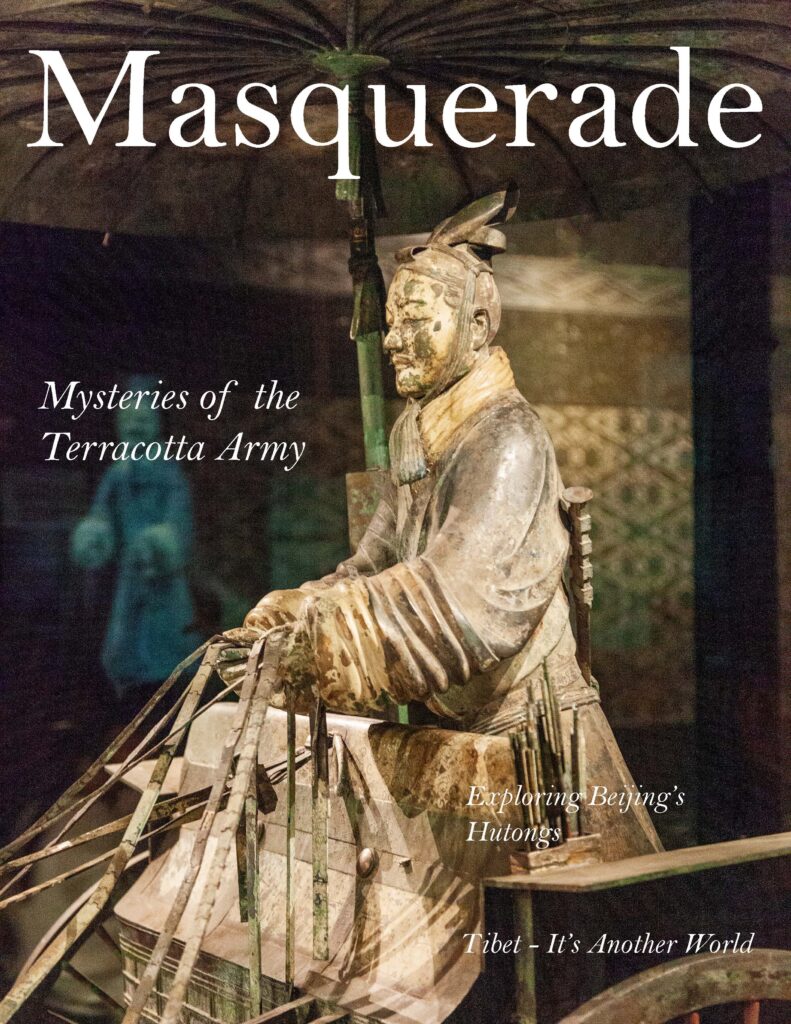
As these terracotta warriors continue to silently stand guard, they remind us of China’s rich cultural heritage.
Story and Photography by Terry Check
Nestled in the heart of China’s Shaanxi province lies one of the most remarkable archaeological discoveries of the 20th century – the Terracotta Army. A silent army of thousands, crafted over two millennia ago, these life-sized warrior figures have captivated the world with their sheer scale and artistry. Masquerade Magazine embarks on a journey through the history, discovery, necropolis, tomb, excavation site, warrior figures, construction, and legacy of the Terracotta Army.
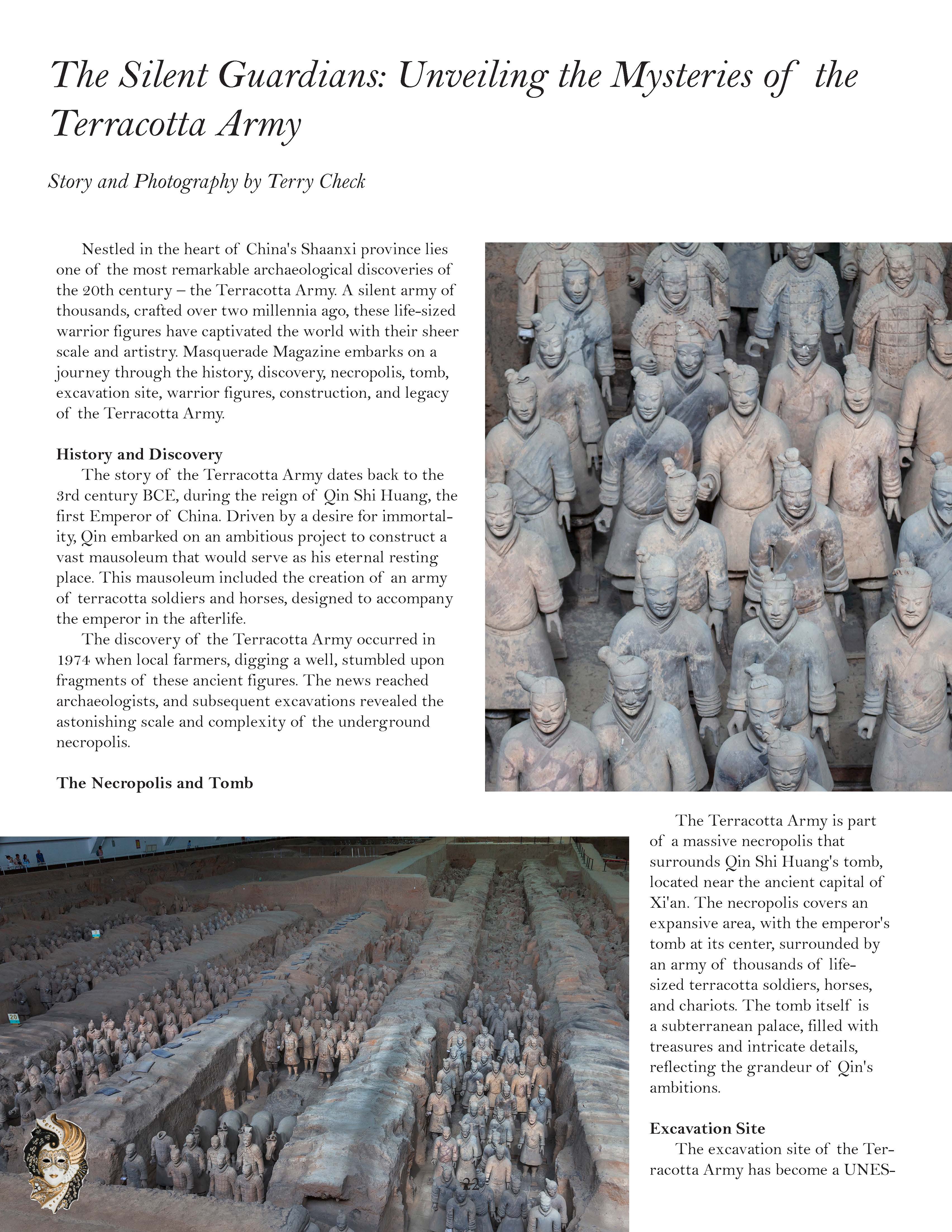
History and Discovery
The story of the Terracotta Army dates back to the 3rd century BCE, during the reign of Qin Shi Huang, the first Emperor of China. Driven by a desire for immortality, Qin embarked on an ambitious project to construct a vast mausoleum that would serve as his eternal resting place. This mausoleum included the creation of an army of terracotta soldiers and horses, designed to accompany the emperor in the afterlife.
The discovery of the Terracotta Army occurred in 1974 when local farmers, digging a well, stumbled upon fragments of these ancient figures. The news reached archaeologists, and subsequent excavations revealed the astonishing scale and complexity of the underground necropolis.
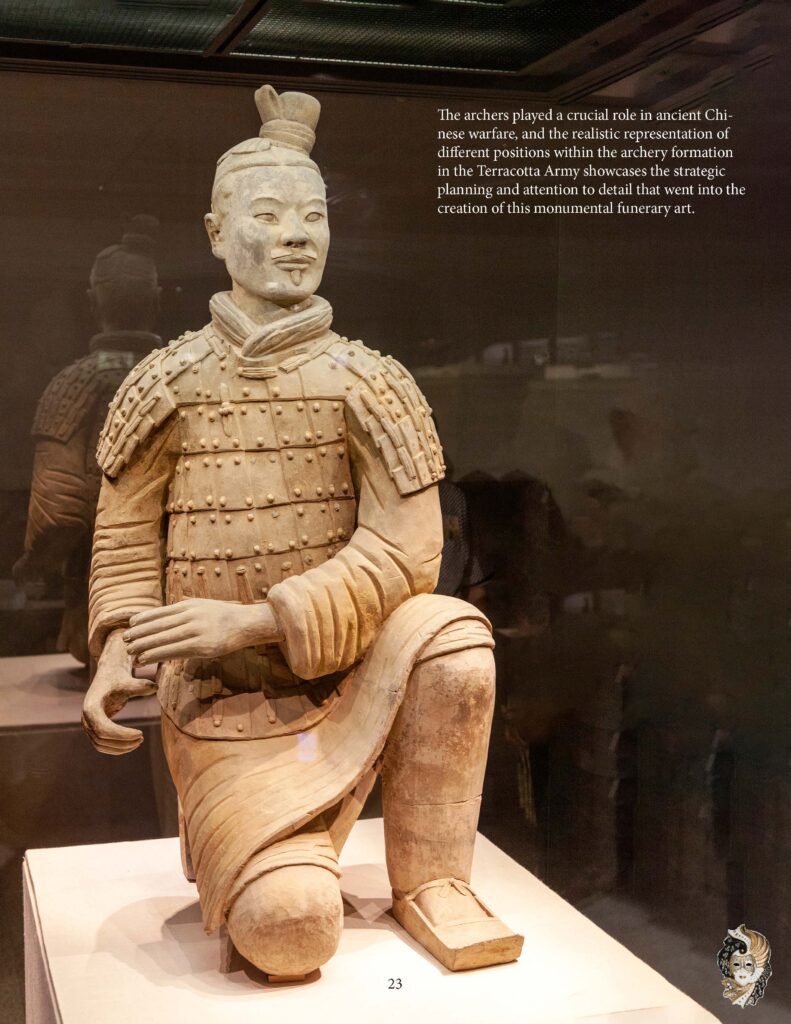
The Necropolis and Tomb
The Terracotta Army is part of a massive necropolis that surrounds Qin Shi Huang’s tomb, located near the ancient capital of Xi’an. The necropolis covers an expansive area, with the emperor’s tomb at its center, surrounded by an army of thousands of life-sized terracotta soldiers, horses, and chariots. The tomb itself is a subterranean palace, filled with treasures and intricate details, reflecting the grandeur of Qin’s ambitions.
Excavation Site
The excavation site of the Terracotta Army has become a UNESCO World Heritage site, attracting millions of visitors from around the globe. The site is meticulously organized, with different pits revealing various aspects of the ancient army. Pit 1, the largest and most iconic, features rows upon rows of infantry soldiers in battle formation. Pit 2 contains cavalry and archers, while Pit 3 houses high-ranking officers and chariots.
Warrior Figures
The terracotta warrior figures are a testament to the craftsmanship and artistry of ancient Chinese artisans. Each figure is unique, depicting soldiers with different hairstyles, facial expressions, and armor. The warriors are equipped with real weapons, including swords, spears, and crossbows. The attention to detail extends to the soles of their shoes, capturing the diversity of the ancient Chinese military.
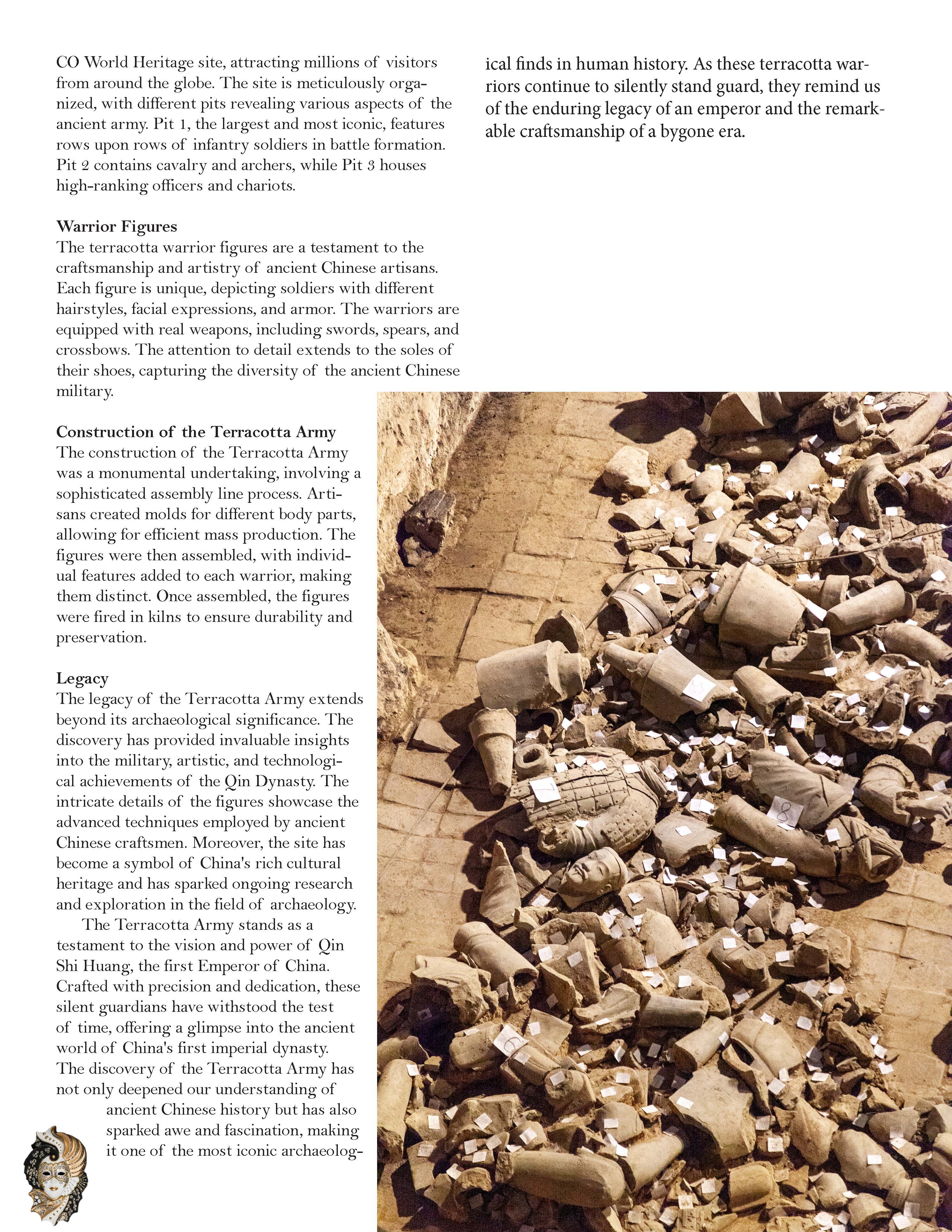
Construction of the Terracotta Army
The construction of the Terracotta Army was a monumental undertaking, involving a sophisticated assembly line process. Artisans created molds for different body parts, allowing for efficient mass production. The figures were then assembled, with individual features added to each warrior, making them distinct. Once assembled, the figures were fired in kilns to ensure durability and preservation.
Legacy
The legacy of the Terracotta Army extends beyond its archaeological significance. The discovery has provided invaluable insights into the military, artistic, and technological achievements of the Qin Dynasty. The intricate details of the figures showcase the advanced techniques employed by ancient Chinese craftsmen. Moreover, the site has become a symbol of China’s rich cultural heritage and has sparked ongoing research and exploration in the field of archaeology.
The Terracotta Army stands as a testament to the vision and power of Qin Shi Huang, the first Emperor of China. Crafted with precision and dedication, these silent guardians have withstood the test of time, offering a glimpse into the ancient world of China’s first imperial dynasty. The discovery of the Terracotta Army has not only deepened our understanding of ancient Chinese history but has also sparked awe and fascination, making it one of the most iconic archaeological finds in human history. As these terracotta warriors continue to silently stand guard, they remind us of the enduring legacy of an emperor and the remarkable craftsmanship of a bygone era.
Caption Page 23 The archers played a crucial role in ancient Chinese warfare, and the realistic representation of different positions within the archery formation in the Terracotta Army showcases the strategic planning and attention to detail that went into the creation of this monumental funerary art.
Caption Page 25 – Terracotta musicians, acrobats, and concubines have also been found in recent pits as well as some birds, such as waterfowl, cranes, and ducks. It is believed that Emperor Qin wanted the same grand services and treatment during his afterlife.
Caption Page 26 – Study and Research: Researchers delve into historical texts, ancient art, and archaeological evidence to understand the Qin dynasty’s military practices. They explore the warriors’ attire, hairstyles, and equipment.
Clay Modeling: Technicians create clay models based on their research. These models serve as the foundation for the life-sized replicas.
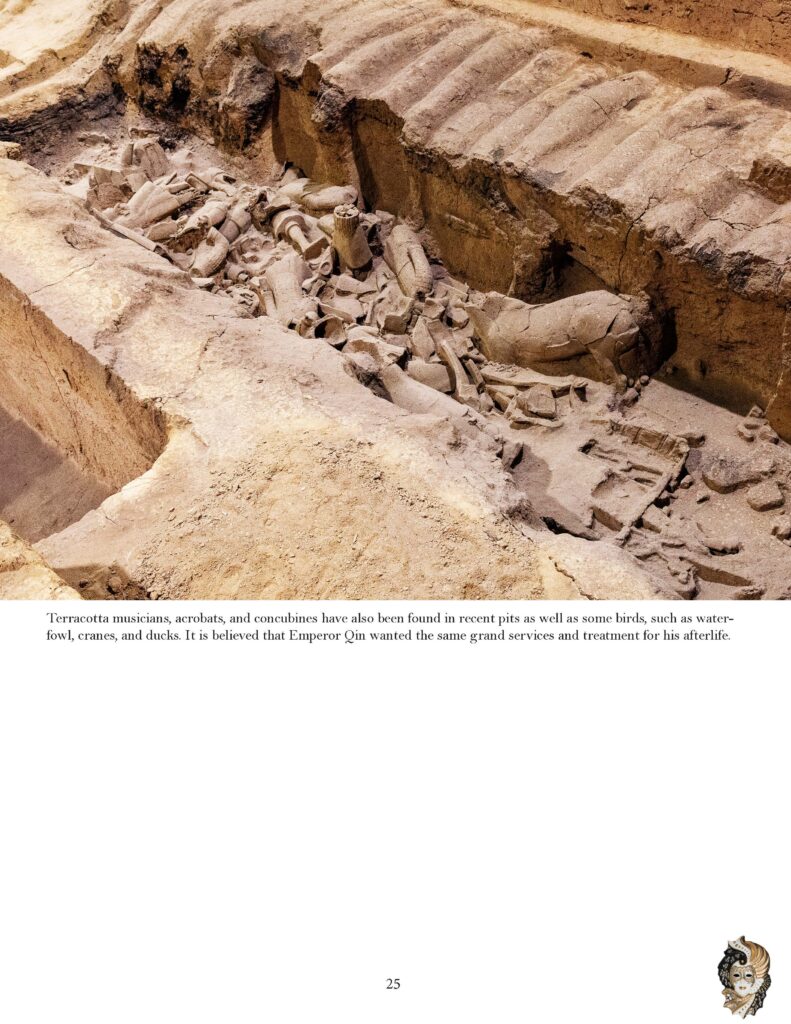
Sculpting and Detailing: Artisans meticulously sculpt each figure, paying attention to every detail—the folds of clothing, the expressions on their faces, and the intricacies of armor. The goal is to recreate the warriors’ fierce determination and stoic resolve.
Firing and Painting: The clay figures are fired in kilns to harden them. Afterward, they are painted to mimic the original colors. The warriors’ armor, weapons, and even their individual features receive careful attention.
Arrangement and Display: Once completed, the recreated warriors are arranged in formations similar to those found in the original pits. The display aims to evoke the awe-inspiring sight that greeted archaeologists when they first unearthed the Terracotta Army.
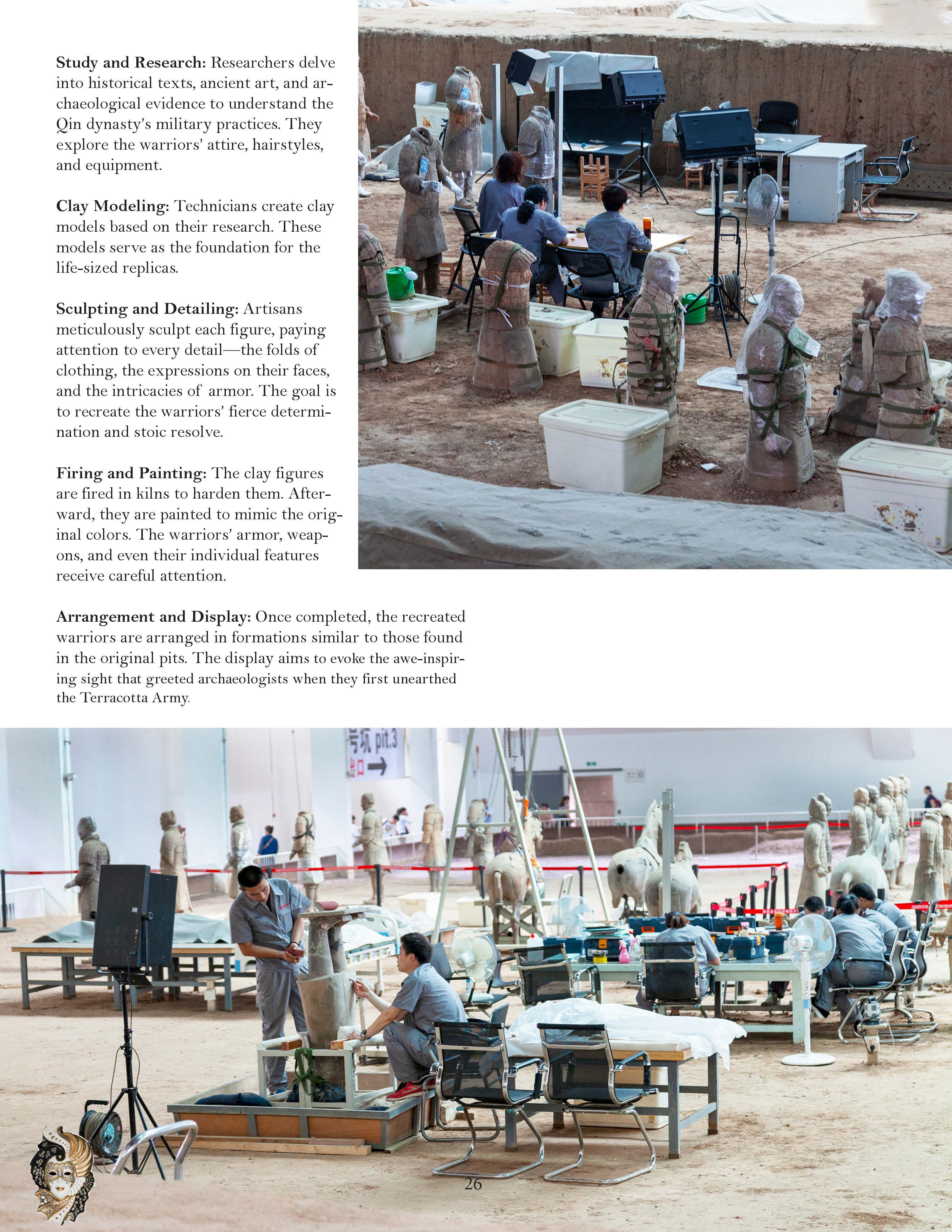
Caption Page 27 – The Qinling bronze chariot and horse has indeed captivated global attention since its discovery. Unearthed at the Mausoleum of the First Qin Emperor, Qin Shi Huang, this remarkable artifact represents a significant achievement in ancient metallurgical casting. These chariots were intended to serve as vehicles for the inspection tours of Emperor Qin Shi Huang in his afterlife.
Caption Page 28-27 – The site contains over 7,000 warriors, 600 horses, and 100 chariots. Each figure is life-sized and intricately detailed, providing a unique insight into ancient Chinese warfare. From weapons and armor to chariot mechanics and command structures, the Terracotta Army offers a glimpse into the military practices of that era.
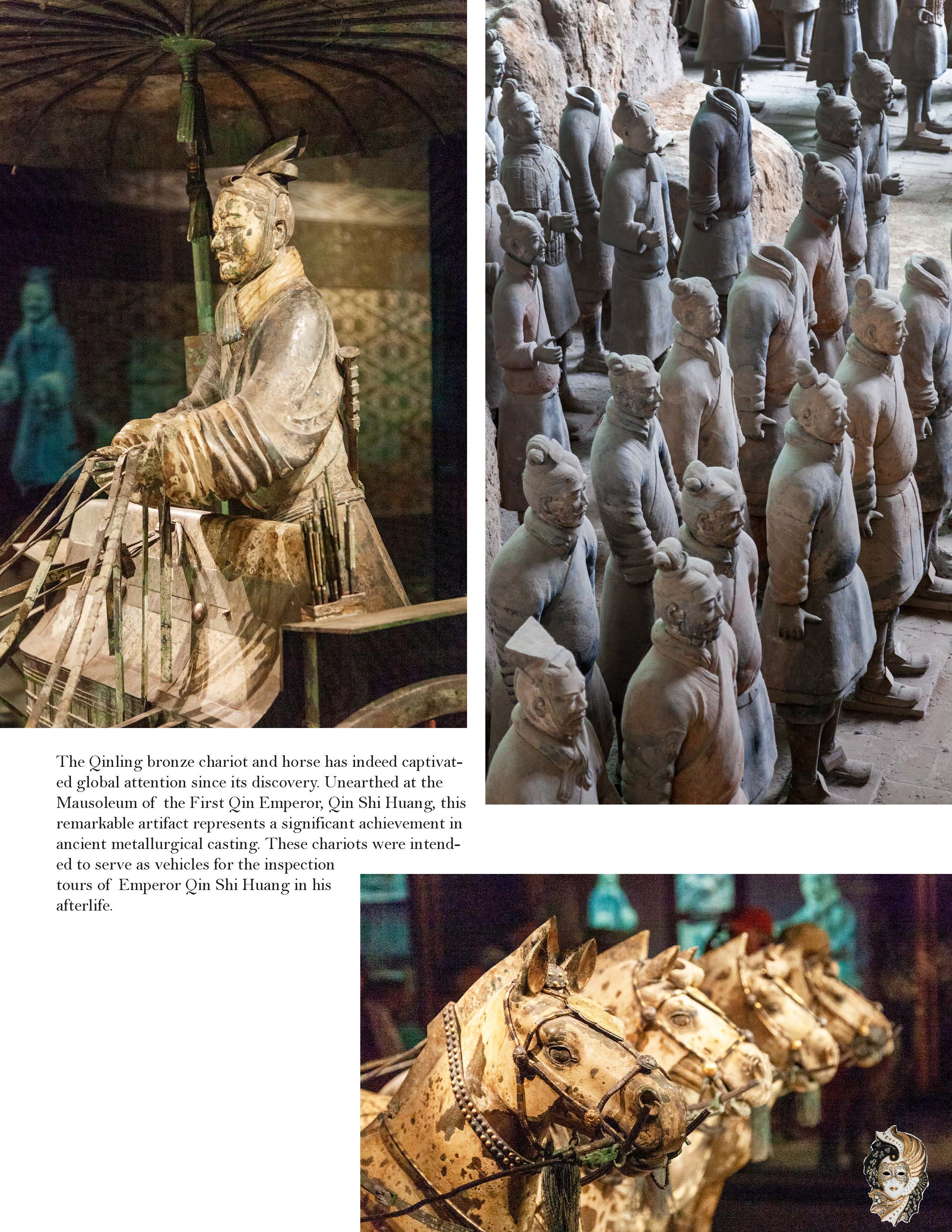
Emperor Qin, in his quest for immortality, ensured that even in death, he would be surrounded by those who served him in life. His concubines, too, were interred alongside him. These women, once part of his court, now stand as silent witnesses to his legacy.

The emperor’s desire for grandeur extended to the skies. In one pit, 13 bronze water birds were discovered. These avian sculptures symbolized grace and freedom, perhaps meant to accompany him on his celestial journey.
Beyond the human figures, pits yielded other treasures. Stone armor, meticulously crafted, lay waiting for its wearer. And horse skeletons, remnants of loyal steeds, stood as silent companions to the warriors.
Emperor Qin’s vision for the afterlife was all-encompassing—a grand assembly of warriors, entertainers, and even birds. His legacy endures, not only in the clay figures but also in the echoes of an ancient empire that once spanned 56 square kilometers. .